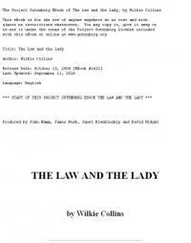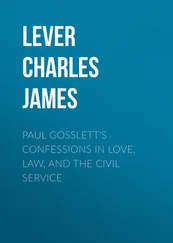Thomas Troward - The Law and the Word
Здесь есть возможность читать онлайн «Thomas Troward - The Law and the Word» — ознакомительный отрывок электронной книги совершенно бесплатно, а после прочтения отрывка купить полную версию. В некоторых случаях можно слушать аудио, скачать через торрент в формате fb2 и присутствует краткое содержание. Жанр: unrecognised, на немецком языке. Описание произведения, (предисловие) а так же отзывы посетителей доступны на портале библиотеки ЛибКат.
- Название:The Law and the Word
- Автор:
- Жанр:
- Год:неизвестен
- ISBN:нет данных
- Рейтинг книги:4 / 5. Голосов: 1
-
Избранное:Добавить в избранное
- Отзывы:
-
Ваша оценка:
- 80
- 1
- 2
- 3
- 4
- 5
The Law and the Word: краткое содержание, описание и аннотация
Предлагаем к чтению аннотацию, описание, краткое содержание или предисловие (зависит от того, что написал сам автор книги «The Law and the Word»). Если вы не нашли необходимую информацию о книге — напишите в комментариях, мы постараемся отыскать её.
Troward was a past president of the International New Thought Alliance
The Law and the Word — читать онлайн ознакомительный отрывок
Ниже представлен текст книги, разбитый по страницам. Система сохранения места последней прочитанной страницы, позволяет с удобством читать онлайн бесплатно книгу «The Law and the Word», без необходимости каждый раз заново искать на чём Вы остановились. Поставьте закладку, и сможете в любой момент перейти на страницу, на которой закончили чтение.
Интервал:
Закладка:
not think. They follow certain fixed laws which we have no power to
alter. Therefore we are confronted at the outset by a broad distinction
between two modes of Motion--the Movement of Thought and the Movement of
Cosmic Energy--the one based upon the exercise of Consciousness and
Will, and the other based upon Mathematical Sequence. This is why that
system of instruction known as Free Masonry starts by erecting the two
symbolic pillars Jachin and Boaz--Jachin so called from the root "Yak"
meaning "One," indicating the Mathematical element of Law; and Boaz,
from the root "Awáz" meaning "Voice" indicating Personal element of Free
Will. These names are taken from the description in I Kings vii, 21 and
II Chron. iii, 17 of the building of Solomon's Temple, where these two
pillars stood before the entrance, the meaning being that the Temple of
Truth can only be entered by passing between them, that is, by giving
each of these factors their due relation to the other, and by realizing
that they are the two Pillars of the Universe, and that no real progress
can be made except by finding the true balance between them. Law and
Personality--these are the two great principles with which we have to
deal, and the problem is to square the one with the other.
Let me start, then, by considering some well established facts in the
physical world which show how the known Law acts under certain known
conditions, and this will lead us on in an intelligible manner to see
how the same Law is likely to work under as yet unknown conditions. If
we had to deal with unknown laws as well as unknown conditions we
should, indeed, be up a gum tree. Fancy a mathematician having to solve
an equation, both sides of which were entirely made up of unknown
quantities--where would he be? Happily this is not the case. The Law is
ONE throughout, and the apparent variety of its working results from the
infinite variety of the conditions under which it may work. Let us lay a
foundation, then, by seeing how it works in what we call the common
course of Nature. A few examples will suffice.
Hardly more than a generation ago it was supposed that the analysis of
matter could not be carried further than its reduction to some seventy
primary chemical elements, which in various combinations produced all
material substances; but there was no explanation how all these
different elements came into existence. Each appeared to be an original
creation, and there was no accounting for them. But now-a-days, as the
rustic physician says in Molière's play of the "Médecin Malgré Lui,"
"nous avons changé tout cela." Modern science has shown conclusively
that every kind of chemical atom is composed of particles of one
original substance which appears to pervade all space, and to which the
name of Ether has been given. Some of these particles carry a positive
charge of electricity and some a negative, and the chemical atom is
formed by the grouping of a certain number of negatively charged
particles round a centre composed of positive electricity around which
they revolve; and it is the number of these particles and the rate of
their motion that determines the nature of the atom, whether, for
instance, it will be an atom of iron or an atom of hydrogen, and thus we
are brought back to Plato's old aphorism that the Universe consists of
Number and Motion.
The size of these etheric particles is small beyond anything but
abstract mathematical conception. Sir Oliver Lodge is reported to have
made the following comparison in a lecture delivered at Birmingham. "The
chemical atom," he said, "is as small in comparison to a drop of water
as a cricket-ball is compared to the globe of the earth; and yet this
atom is as large in comparison to one of its constituent particles as
Birmingham town-hall is to a pin's head." Again, it has been said that
in proportion to the size of the particles the distance at which they
revolve round the centre of the atom is as great as the distance from
the earth to the sun. I must leave the realization of such infinite
minuteness to the reader's imagination--it is beyond mine.
Modern science thus shows us all material substance, whether that of
inanimate matter or that of our own bodies, as proceeding out of one
primary etheric substance occupying all space and homogeneous, that is
being of a uniform substance--and having no qualities to distinguish one
part from another. Now this conclusion of science is important because
it is precisely the fact that out of this homogeneous substance
particles are produced which differ from the original substance in that
they possess positive and negative energy and of these particles the
atom is built up. So then comes the question: What started this
differentiation?
The electronic theory which I have just mentioned takes us as far as a
universal homogeneous ether as the source from which all matter is
evolved, but it does not account for how motion originated in it; but
perhaps another closely allied scientific theory will help us. Let us,
then, turn to the question of Vibrations or Waves in Ether. In
scientific language the length of a wave is the distance from the crest
of one wave to that of the wave immediately following it. Now modern
science recognizes a long series of waves in ether, commencing with the
smallest yet known measuring 0.1 micron, or about 1/254,000 of an inch,
in length, measured by Professor Schumann in 1893, and extending to
waves of many miles in length used in wireless telegraphy--for instance
those employed between Clifden in Galway and Glace Bay in Nova Scotia
are estimated to have a length of nearly four miles. These
infinitesimally small ultra-violet or actinic waves, as they are called,
are the principal agents in photography, and the great waves of wireless
telegraphy are able to carry a force across the Atlantic which can
sensibly affect the apparatus on the other side; therefore we see that
the ether of space affords a medium through which energy can be
transmitted by means of vibrations.
But what starts the vibrations? Hertz announced his discovery of the
electro-magnetic waves, now known by his name, in 1888; but, following
up the labours of various other investigators, Lodge, Marconi and others
finally developed their practical application after Hertz's death which
occurred in 1894. To Hertz, however, belongs the honour of discovering
how to generate these waves by means of sudden, sharply defined,
electrical discharges. The principle may be illustrated by dropping a
stone in smooth water. The sudden impact sets up a series of ripples all
round the centre of disturbance, and the electrical impulse acts
similarly in the ether. Indeed the fact that the waves flow in all
directions from the central impulse is one of the difficulties of
wireless telegraphy, because the message may be picked up in any
direction by a receiver tuned to the same rate of vibration, and the
interest for us consists in the hypothesis that thought-waves act in an
analogous manner.
That vibrations are excited by sound is beautifully exemplified by the
eidophone, an instrument invented, I believe, by Mrs. Watts-Hughes, and
with which I have seen that lady experiment. Dry sand is scattered on a
diaphragm on which the eidophone concentrates the vibrations from music
played near it. The sand, as it were, dances in time to the music, and
Читать дальшеИнтервал:
Закладка:
Похожие книги на «The Law and the Word»
Представляем Вашему вниманию похожие книги на «The Law and the Word» списком для выбора. Мы отобрали схожую по названию и смыслу литературу в надежде предоставить читателям больше вариантов отыскать новые, интересные, ещё непрочитанные произведения.
Обсуждение, отзывы о книге «The Law and the Word» и просто собственные мнения читателей. Оставьте ваши комментарии, напишите, что Вы думаете о произведении, его смысле или главных героях. Укажите что конкретно понравилось, а что нет, и почему Вы так считаете.












